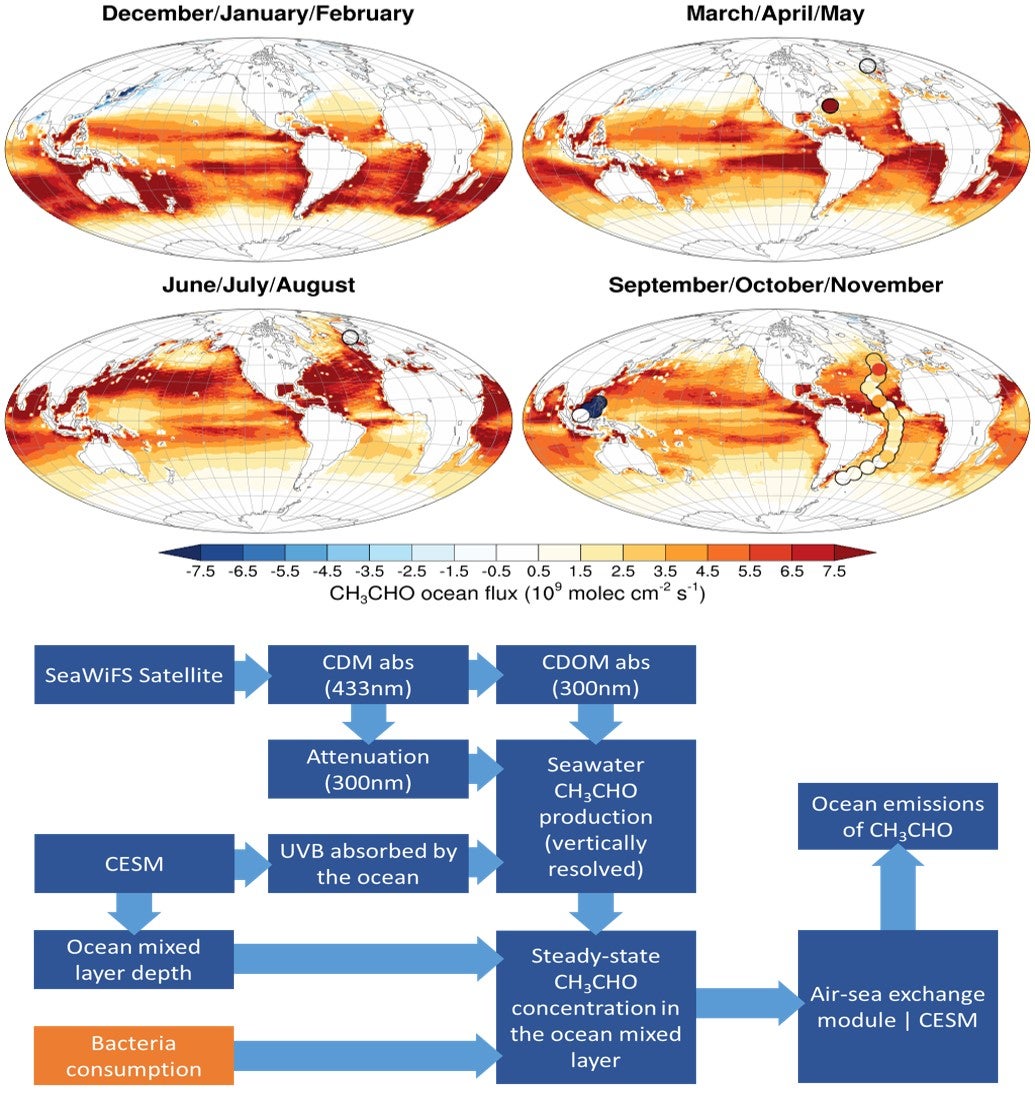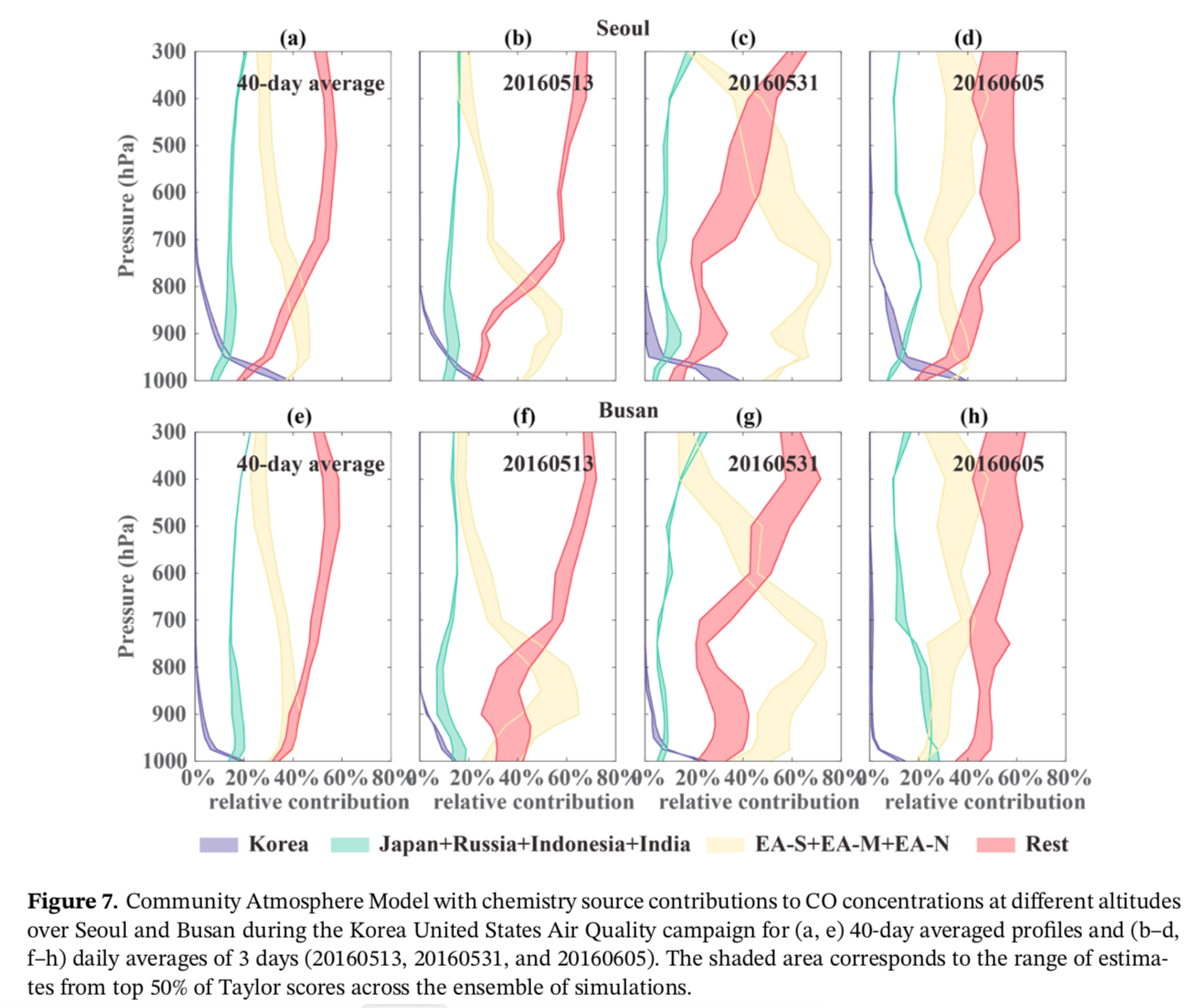CAM-chem Research
Recent research highlights
|
|
Oceanic Source of Acetaldehyde. Acetaldehyde (CH3CHO) is one of the most abundant carbonyl compounds in the atmosphere, which is emitted from a variety of natural and anthropogenic sources. It is also produced from photochemical oxidation of a number of volatile organic compounds. CH3CHO is a key precursor of peroxyacetyl nitrate (PAN), which plays an important role in the long-range transport of NOx. CH3CHO also affects the reactive halogen chemistry and the oxidative capacity. During the recent NASA ATom aircraft campaign, CH3CHO was measured using the NCAR TOGA instrument. We found that in the remote troposphere, CH3CHO is underestimated by CAM-chem by more than one order of magnitude. Oceanic emissions of CH3CHO, calculated using the newly developed online air-sea exchange module, can explain part of the observed CH3CHO in the marine boundary layer. In the remote free troposphere, a significant fraction of CH3CHO remains unexplained. We further found that the observed particulate organics are insufficient to explain all the observed CH3CHO, therefore gas-phase precursor is needed. Our combined modeling and observational analysis suggests that a large fraction of reactive carbon in the remote troposphere is currently not captured by models or measurement techniques (Wang et al., GRL, in review). |
|
|
Source Attribution for KORUS-AQ. CAM-chem was used to investigate regional sources contributing to CO during the Korea United States Air Quality (KORUS‐AQ) campaign conducted over Korea (1 May to 10 June 2016) (Tang et al., JGR, 2019). The simulations use three spatial resolutions, three anthropogenic emission inventories, two meteorological fields, and nine emission scenarios. These simulations are evaluated against measurements from the DC‐8 aircraft and Measurements Of Pollution In The Troposphere (MOPITT). Results show that simulations using bottom‐up emissions are consistently lower (bias: −34 to −39%) and poorer performing (Taylor skill: 0.38–0.61) than simulations using alternative anthropogenic emissions (bias: −6 to −33%; Taylor skill: 0.48–0.86), particularly for enhanced Asian CO and volatile organic compound (VOC) emission scenarios, suggesting underestimation in modeled CO background and emissions in the region. |
Model Intercomparison Activities
CAM-chem is being used in the Hemispheric Transport of Air Pollutants (HTAP) studies. Published works from this study include: Special Issue in ACP.
CAM-chem is a participant in the (CCMI) Publications in Special Issue in ACP/AMT/GMD.
ACOM Type
CAM-chem

